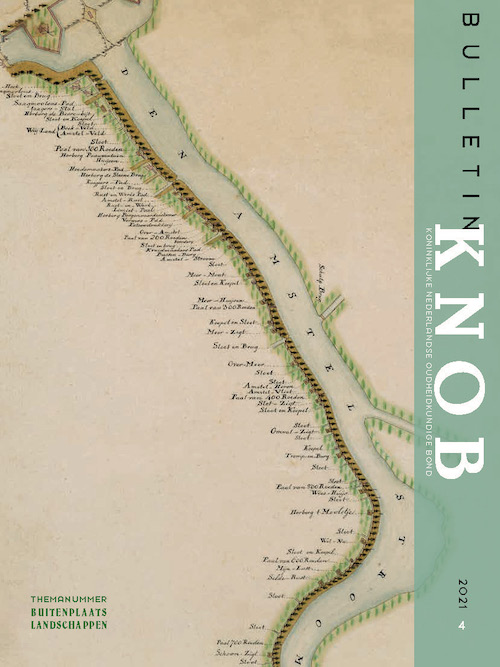Indexing ESCI / Scopus


Articles
Steffen Nijhuis, Christian Bertram and Kees Somer Preface to the theme issue 'Estate Landscapes' Hans Renes Estate landscapes in the Netherlands. ‘Vast swathes of the countryside were covered with country houses’ Hanneke Ronnes Dutch research into the country house and its landscape. Current state of scholarship and outlook Elyze Storms-Smeets The social geography of the estate landscape in Gelders Arcadië Paul Thissen Estate landscapes in Gelderland. Government interventions, past and present Steffen Nijhuis Future-proofing estate landscapes. A regional design approach for historical country estates in a landscape context
Book review
Rita Radetzky, Tuinarchitect Lucas Pieters Roodbaard (1782-1851) en de landschapsstijl (book review by Christian Bertram)
The issue can also be ordered online as a printed edition.
This theme issue is co-funded by the dr. Hendrik Muller Fund and TU Delft
to the theme issue 'Estate Landscapes'
In the past, country house research was mainly concerned with individual houses and gardens. Yet, as early as the seventeenth and eighteenth centuries, so many country houses were being built around the major cities that they came to define the landscape. Genuine estate landscapes took shape along several rivers (Amstel, Vecht), along the inner edge of coastal dunes, and on newly reclaimed land. In the middle of the seventeenth century, the rivers were augmented with a network of barge canals and soon they too were lined by a belt of country houses. The greatest density of country houses...
One of the unmistakable trends in current country house research is the growing interest in the landscape context of country houses. The unquestioned emphasis on the main house and the garden is increasingly giving way to an approach that includes or focuses on the wider setting: village, nature, town, infrastructure, farms, churches, and other country houses. This article sketches the rise of this approach and offers an overview of the various perspectives. Among the aspects covered by landscape studies are country house regions, choice of location, the productive landscape,...
For many centuries, the landscape and cultural history of the Netherlands have been influenced by the rural estates of large landowners. Their country houses with gardens, parks and farmland formed an important combination of practical aspects of economic management and aesthetic landscaping. Many castles or country houses were linked to large landholdings of several hundred, sometimes even thousands of hectares, as in the case of the Veluwezoom in the Province of Gelderland. Since the late Middle Ages this area, now known as Gelders Arcadia, has been popular with the landed elite, whose...
The Province of Gelderland has long boasted a large number of country houses and landed estates, which over time coalesced into estate landscapes around the historical capitals of the Duchy of Guelders quarters of Nijmegen, Arnhem and Zutphen.
Rapidly increasing urbanization from the end of the nineteenth century onwards threatened the coherence and accessibility of these landscapes. Gelderland’s largest cities, Arnhem and Nijmegen, watched in dismay as many country houses and landed estates fell victim to subdivision and development. In response they started to buy up portions...
Climate change and urbanization have substantial ramifications for the management and protection of cultural-historical landscapes. This is especially true for historical estate landscapes – landscapes whose character is defined by several historical castles, country houses (along with their gardens and parks), and landed estates – where climate change adaptation constitutes a major task. Issues of concern include an excess or shortage of water and changes to vegetation as a result of rising temperatures. That pressure is compounded by increasing urbanization and the associated...
Book review of a book written by Rita Radetzky
